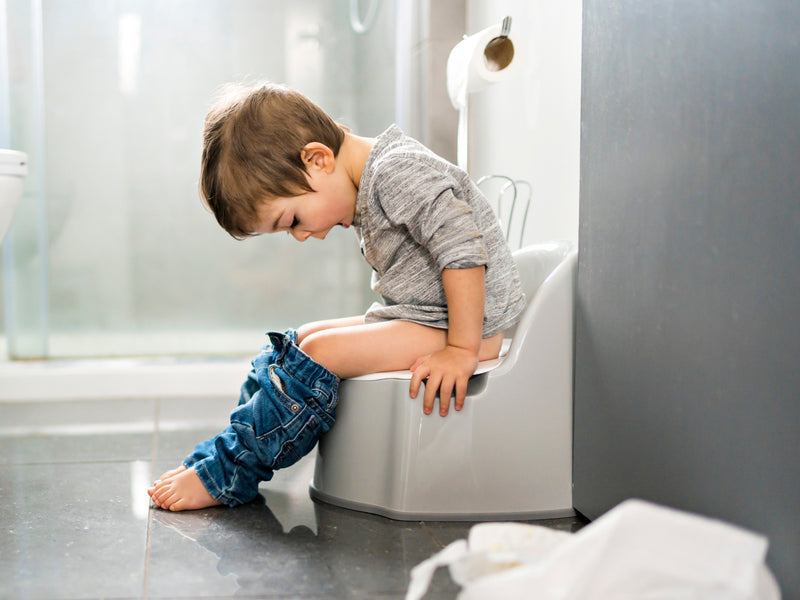
Everything there is to know about perineal rehabilitation
After pregnancy and childbirth, perineal rehabilitation sessions are essential to re-tone the muscles and regain contact with the weakened body. It is generally at the end of your stay in the maternity ward that the midwife will give you a prescription for 10 postpartum rehabilitation sessions, during which you will follow perineal rehabilitation exercises that will help you regain the tone of your perineum as well as avoid possible urinary leakage.
The sessions are given by a midwife or a specialized physiotherapist who has received this training. Choosing your therapist is very important for the sessions to run smoothly and for you to achieve the desired results.
Définition: Perineal rehabilitation
First of all, before explaining what perineal rehabilitation is, let's define what the perineum is. The perineum refers to the set of muscles around the vulva and anus, whose role is to support the pelvic organs - rectum, vagina and bladder.
Perineal rehabilitation is the re-education of the perineal muscles. Perineal re-education sessions restore muscle tone and prevent urine leakage and future problems. It also helps increase tissue elasticity and the ability to contract and relax affected muscles. Perineal rehabilitation can also help treat urination emergencies, discomfort associated with organ descents, pelvic pain…
Which women need perineal rehabilitation?
All women, whether they have had a cesarean or a natural birth, need perineal rehabilitation. The method of delivery is not a determining factor. Even if the perineum is not in bad condition, perineal rehabilitation works the latter but also the abdominal muscles, back muscles, etc.
For example, some women have a toned perineum, but are unable to contract and/or relax their muscles and rehabilitation can remedy these types of problems. On the other hand, sometimes some women can do the rehabilitation on their own. In this case, an evaluation by the doctor or midwife is essential as well as close monitoring.
Perineal rehabilitation exercises and techniques
The exercises performed during perineal rehabilitation mainly consist of performing contractions of the muscles surrounding the vagina and anus. There are 3 techniques that are often used simultaneously: manual, electrostimulation and biofeedback.
- Manual rehabilitation: this consists of a vaginal examination where the therapist uses only her fingers to train the perineum, test its resistance and strengthen it. The patient then repeatedly contracts her muscles in response.
- Electrostimulation: this consists of low-intensity electrical stimulation administered through a vaginal probe that helps stimulate the nerves in the perineum and cause them to contract passively.
- Biofeedback: this technique also uses a vaginal probe, but this time without electrical stimulation. This probe, which is associated with a visual or sound signal, makes it possible to visualize a curve which indicates the effectiveness of the contraction and relaxation of the perineum.
Specific abdominal strengthening exercises to prevent back pain and tone muscles can also complement these techniques.
When to start perineal rehabilitation?
Don't panic, perineal rehabilitation does not begin immediately after childbirth. It is during your postpartum visits that the rehabilitation sessions will be prescribed to you by your gynecologist or midwife. It is advisable to start rehabilitation 6 to 8 weeks after childbirth. However, if for any reason you start your sessions later this is not a problem at all, rehabilitation still works even when started late.
Similarly, the times may vary depending on the rehabilitation exercises, for example for electrostimulation, it would be better to respect a period of 6 to 8 weeks after childbirth so that the tissues have time to heal. As for biofeedback, it can start earlier.
Why is perineal rehabilitation important?
Carrying a baby is not easy, during your pregnancy your perineum not only supports the weight of the baby and the placenta for 9 months but also undergoes the stretching of childbirth. It is normal for it to be weakened by all of this.
The consequences of a weakened perineum are several: urinary leaks, risk of incontinence or prolapse (descent of organs), deterioration of sexual function and decrease in sensations… It is very important to use perineal rehabilitation to strengthen the muscles and avoid all these problems.
To answer the question why perineal rehabilitation is essential for a woman who has just given birth, we could compare the perineum to a floor, a floor supporting the bladder, vagina and rectum. Normally, it resists without any problem, but following pregnancy and childbirth, the latter cause relaxation of the tissues making up the perineum and lead to the consequences mentioned above.
Moreover, without perineal rehabilitation, the quality of your sexual intercourse may be affected since the muscle relaxation that the vagina undergoes can alter sensations and the attainment of pleasure. Perineal rehabilitation helps prevent urinary incontinence, strengthen pelvic floor muscles, treat pelvic floor dysfunction, eliminate perineal pain and much more.
The most effective method for perineal rehabilitation
It is completely possible to start your perineal and pelvic rehabilitation at home, safely and efficiently, and we have the ideal product for that: Perifit, the perineal rehabilitation probe by excellence.
Perifit is a connected probe that allows you to manipulate video games on your smartphone with your perineum. It is a medical device approved by the FDA and CE certified, the development of which has been supervised by a medical committee of international experts in perineal rehabilitation. It is recommended by healthcare professionals to prevent organ descent, incontinence and other pelvic floor problems.
Perifit has several advantages in its convenience, as it helps you exercise your perineum with biofeedback simply from your phone while achieving significant results. With the application associated with Perifit, the evaluation of your perineum is based on a questionnaire but also on a personalized test of your floor. With this individual assessment, you will be able to choose the exercise program that works best for you and will bring you the best results.




